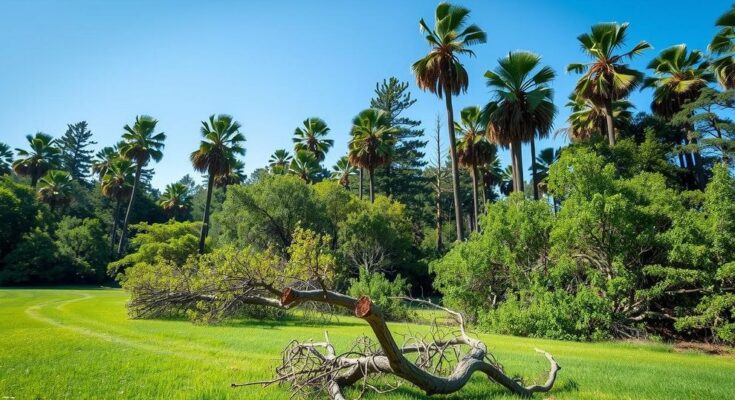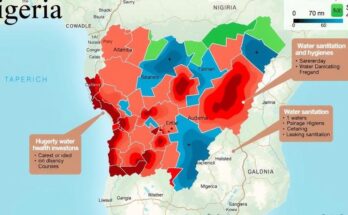Hurricane Helene has left lasting impacts in Southwest Virginia, Northeast Tennessee, and Western North Carolina, increasing wildfire risks. Experts warn that the storm’s remnants could alter fire dynamics due to enhanced fuel loads. As the Atlantic hurricane season approaches, predictions indicate more storms than usual, further complicating recovery efforts.
Last fall’s Hurricane Helene significantly impacted Southwest Virginia, Northeast Tennessee, and Western North Carolina, leaving communities to recover long after the storm. Experts suggest that the remnants of Helene could amplify the risks associated with wildfires, particularly during a period when such natural disasters are typically prevalent in the region.
Michele Steinberg, the Wildfire Division Director at the National Fire Protection Association, explains that some fires are beneficial to ecosystems, aiding in nutrient recycling and promoting the growth of certain species. In the Northeast, Mid-Atlantic, and Southern states, the conditions for wildfires are most common in spring and fall, where the mix of dead material, sunlight, heat, and wind creates an environment conducive to the ignition of fires.
She further elaborates that trees, grasses, and shrubs generally serve as biomass for wildfires. However, when wildfires threaten communities, man-made structures such as homes and vehicles may also act as fuel. The aftermath of Hurricane Helene has amplified this risk due to the abundance of fallen trees and vegetation, which creates a hazardous fuel load that may lead to intensified wildfire events.
The release of dead material poses a dual challenge for fire management. First, emergency services must prioritize repairing infrastructure over addressing wildfire dangers. Steinberg noted that local fire departments recognized the heightened risk early on post-Hurricane Helene, which has already resulted in severe wildfires in Western North Carolina this spring.
To mitigate wildfire risk, Steinberg advises residents to educate themselves on conditions leading to wildfires, such as those indicated by a “Red Flag Warning.” This warning signifies dry, hot, and windy conditions conducive to rapid fire spread. Homeowners were encouraged to eliminate debris accumulation within five feet of their homes, as wind-blown embers may ignite fires, posing a direct threat.
The National Fire Protection Association provides resources for wildfire preparedness, and several Virginia communities are part of the NFPA’s Firewise USA program, working collectively to safeguard shared spaces. Virginia’s spring wildfire season is active until the end of April.
Meanwhile, predictions from Colorado State University indicate an above-average Atlantic hurricane season for 2025, projecting 17 named storms, including nine hurricanes and four major hurricanes. Levi Silvers, a member of the forecasting team, attributes these expectations to warmer-than-average sea-surface temperatures and the influence of a weak La Niña event expected to persist or transition to a neutral state.
The Atlantic hurricane season operates from June 1 to November 30, presenting further challenges in managing and mitigating the aftermath of natural disasters, including the heightened risk of wildfires.
In summary, the aftermath of Hurricane Helene has raised concerns regarding increased wildfire risks in affected communities due to the accumulation of combustible debris. It is imperative for residents to remain informed about wildfire conditions and take preventive measures to protect their homes. Additionally, projections from Colorado State University suggest a concerning trend of higher-than-average hurricane activity, which could pose further challenges in disaster management for the coming years.
Original Source: www.wvtf.org




